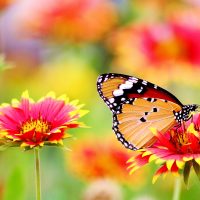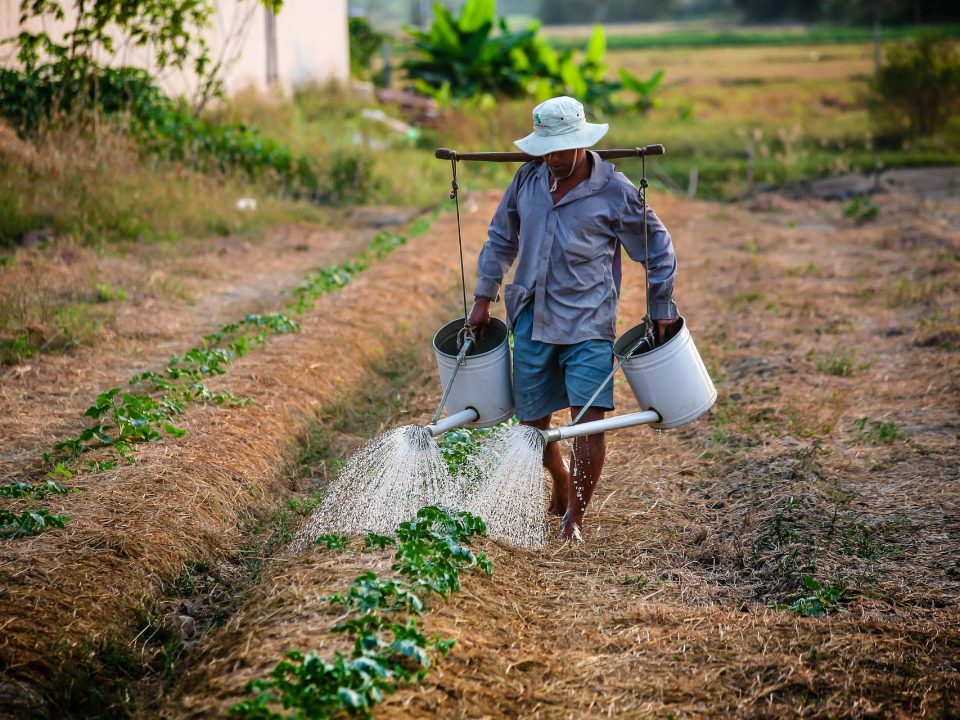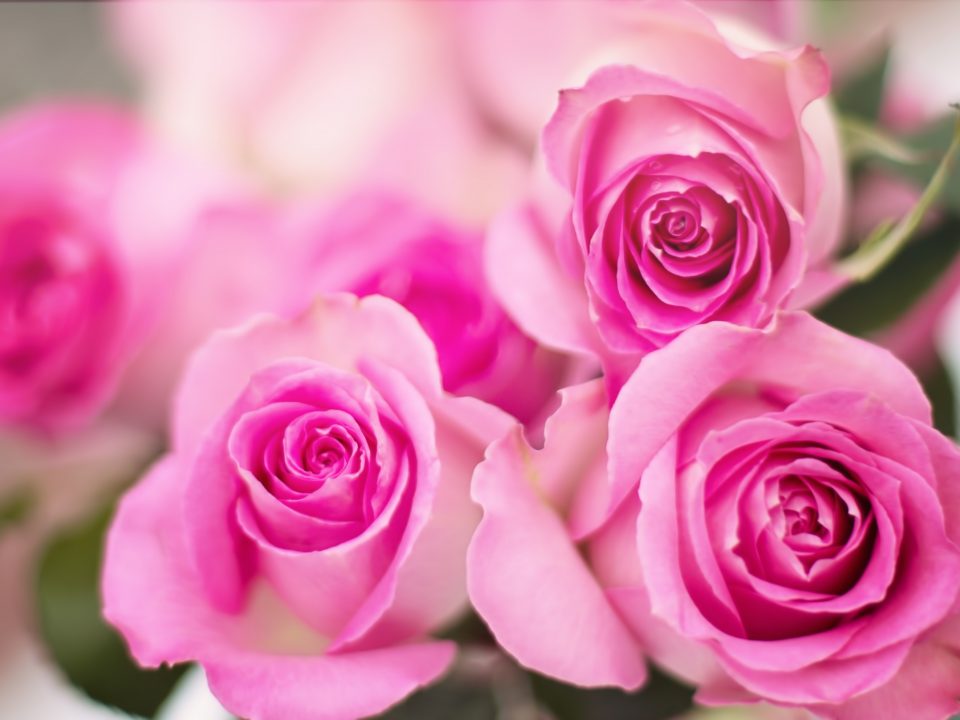Butterflies in your Garden

Vegetation Purifies air
August 16, 2018
Ecological Gardening
August 30, 2018How to Attract Butterflies to your Garden
The colorful butterflies in the gardens add color, beauty and movement to the surroundings. In addition, the butterflies as nectar extract pollinate and fertilize the garden plants. A garden that satisfies the needs of butterflies will attract many butterflies. The butterflies belong to the Lepidoptera series in the Insecta department. They appear mainly in the spring and summer and their appearance fades in the autumn, towards the winter. They all have a similar life cycle that contains four stages: an egg, a larva, a pupa, and an adult butterfly. The butterfly female lays her eggs, usually, on a limited number of host plants (usually from the same family). When the larva emerges from the egg, it feeds on the plant leaves and grows to its incarnation. From the golem emerges the adult butterfly, which feeds on a buoy of nectar and sometimes fruit juices rotten.
Here are some helpful tips for pulling garden butterflies:
Site selection
– Butterflies (most of them) and plants prefer illuminated places from the sun (at least 5-6 hours a day). The lighter the place, the longer the butterflies will be (the males – sucking nectar and looking for females, the females – sucking nectar and laying eggs).
On the other hand, the butterflies also need shady places to rest during the warm hours of the day (a full bush can serve as a hiding place for the sun and resting place at night). The butterflies need protected places for nightlife as well as crazy protection during rest.
In other words, the site must be varied in its micro-climatic zones, so that each species will find its place at the site, 24 hours a day.
The site must be protected from wind (a dense line of shrubs can serve as a windscreen). The wind cools the butterflies and makes them spend more energy while flying.
It is important that the site be, as far as possible, a place isolated from people
Planting plants that attract butterflies
Plant nectar plants (which provide the food of adult butterflies) to attract many butterflies. There are plant nursery plants (used for food larvae) on which the butterflies can lay eggs. The host plants should be suitable for the butterflies that appear in the garden environment.
The inn plants should be planted in secluded and hidden places. Plant trees, shrubs, perennial plants and annual plants.
The vegetation should be varied in height, in the shape of the flower and in the color (some species prefer high plants and some prefer to be low).
Plant the tall vegetation from behind and lower in front.
Plant the plants in groups of the same species, and in a uniform color, to create color surfaces. The plants must have many flowers.
You must be happy all year long.
It is recommended to introduce several plants to increase the flexibility of the variety of plants.
Butterflies are mainly drawn to:
– Orange, yellow and purple flowers as well as pink, red and white.
– Flowers with a single, not a single inflorescence
– Flowers with a flat surface on which they can land (therefore, too small flowers are not recommended).
– Flowers with a small tube, so that they can reach the nectar at the bottom of the flower, with the help of their trunk.
Butterflies are not usually attracted to large flowers (which are in many cases, with little nectar).
Some of the garden flowers should be from the local wild flora.
The butterflies in the area live many generations on the nectar of these local flowers.
In many cases, cultural flowers have little nectar and are not preferred on butterflies.
Nectar Plants (partial list):
Trees and shrubs –
Laurustinus, Lantana, Hebe, Lilac, Honeysuckle, Rosemary, Valerians, Ruta chalepensis, BUDDLEJA MARRUBIFOLIA, Thymes, Meadowsweets, Clerodendrum, Spanish needles, , Ligustrum japonicum, Chaste tree, Duranta…..,
Annual and multi-annual –
Aster, Echinacea, Sage, Marigold, Zinnia, Coreopsis, Ragworts, Lavender, Perez’s sea lavender, cosmos, Chrysanthemum, Blazing stars, Stocks, Nasturtium, Agapanthus, ARCTOTIS HYBRIDA, Milkweed, Eschscholzia, Verbena, Erigeron, Lobelias, Goldenrod, Calendula, Coneflowers, and others
More tips and tips-
Many butterflies drink water and absorb minerals and salts from muddy puddles
(Puddling). It is therefore advisable to take care of the corner of the garden to a muddy place in a bright place
Some species are attracted to predatory animals that are rich in minerals and salts, and there are species in which males cannot fertilize females without these minerals and salts, which has not yet been observed in Israeli species.
Butterflies cannot regulate their body temperature and in the cold morning they perform basking – standing in front of the sun to absorb heat, sometimes accompanied by flapping of the wings to increase body temperature. Care should be taken of large, flat stones that allow this. These stones absorb the sun’s rays, emit heat and thus help the baskin process.
In addition, these stones can also be used as female search sites. Large flat leaves or flowers can sometimes be used as substitutes for stones.
Make sure that there are observation points for male butterflies. At these points the males stand looking for females (this place is also good for basking).
Fruit (apples, oranges, bananas, peaches, etc.) should be added as an additional source of food.
It is recommended to add nectar substitutes (sugar, honey, and mixed fruit syrup).
It is best to add a long box that will serve as a winter shelter for hybrid species.
Do not use pesticide pesticides.
Watch the butterflies and see which plants they visit and ignore, and accordingly change the composition of plants in the garden.
The more natural the place, the more butterflies will visit it
www.orseeds.com
www.seedsss.com






